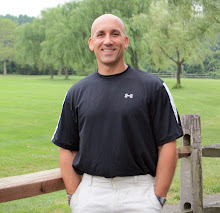
As important as it is to perform exercises that engage your entire musculature, it is also essential to understand which muscles are which, and what exercises work those muscles. For instance, when performing a chest press, the main muscles being used are the pectorals (chest), the anterior deltoid (front part of the shoulder) and the triceps. When you do pulling movements such as a chin up, you utilize your upper back (latissimus dorsi, along with smaller muscles of the upper back), biceps and forearms.
Having a general understanding of your anatomy, the muscles that are used during an exercise and how the muscles work will only add to your overall performance during your workout.
A Little More Detail
Chest: Properly known as the pectorals but better known as the chest or “pecs” is comprised of two muscles, the primary being the pectoralis major and the other being the pectoralis minor. The main function of the “pecs” is to pull the upper arm across the body.
Shoulders: The shoulder or “delts” are made up of three separate heads. The anterior delt which is positioned in the front of the shoulder and raises the arm forward; the middle delt or lateral head raises the arm sideways and the rear or posterior delt draws the arm backward.
Upper Back: The lattisimus dorsi or “lats” encompass most of the upper back. The back is also made up of additional muscles such as teres major & minor and rhomboids, all enabling you to pull your arm down and back.
Hips: The hips are comprised of the gluteals (glutes or “butt”), adductors and iliopsoas muscles. The glutes are the strongest muscle in the body and their main function is in hip extension. Basically they drive the upper leg backward. The adductors (which are located in the inner thigh) are used when you pull your legs together. Hint to remember: You are ADDing your legs together when you adduct. The iliopsoas muscles are located on the front of the hip and enable you to pull your knees to your chest.
Upper Legs: The two main muscles of the upper leg are the quadriceps (quads) and the hamstrings. The quads (Quad meaning four) is made up of four separate muscles which are located on the front portion of your leg and collectively allow you to extend your leg out in front of you. The hamstrings (sometimes referred to as the “hammies”) are located on the back portion of your leg and enable you to flex your knee toward s your butt.
Upper Arms: The two main muscles of the upper arm are the biceps and the triceps. The biceps (or “bi’s”), which are made up of two separate heads, are on the front portion of your arm and allow you to bend your arm towards the shoulder. The triceps (or “tri’s) are located on the rear portion of the upper arm and are made up of three heads or muscles. They allow you to extend your arm or straighten your arms.
Lower Arms: Who can forget the old favorite Popeye and his huge forearms? The forearms are made up of several muscles but basically the anterior group (the muscles on the front of the forearm) causes wrist flexion allowing you to bend your wrist. Wrist extension allows you to straighten your wrist.
Abdominals: Universally known as the “abs”, they are made up of three muscles. The rectus abdominis, obliques and the transverses abdominis. The main function of the rectus abdominus is to pull the torso towards the lower body, i.e. a crunching movement. The obliques, which are located on the side of the abs, better known to most as the “love handles” allow for lateral flexion and rotation. The transverses abs are used to constrict the abdominal area as in controlled breathing.
Lower Back: The erector spinae is the main muscle in the lower back. The “erectors” permit you to extend your torso, basically straighten yourself up from a bent over position. The erectors are a muscle that need to be trained to maintain proper back health.
Neck: There are four major muscles in the neck, allowing you to move laterally as well as backward and forward. The trapezius or “traps” are located at the base of the neck and are responsible for allowing your shoulders to raise up and down in an “I don’t know” fashion.
I hope you have found this information to be both informative and beneficial in pursuing your physical goals.
"Train With A Purpose"
Fred Fornicola
www.premierepersonalfitness.com


